This post highlights the significance of comprehending and deactivating the Join Microsoft MAPS Policy Using Intune. We will explore how to apply this policy using Intune’s Configuration Profiles. The main goal is to acquire understanding and hands-on experience in effectively disabling the Join Microsoft MAPS Policy Using Intune.
Join Microsoft MAPS Policy Using Intune option enables you to become a part of Microsoft MAPS, an online community designed to assist you in making informed decisions regarding potential threats. By joining this community, you contribute to stopping the spread of new malicious software infections.
When participating, you have the choice to send either basic or additional information about detected software to Microsoft. This data helps Microsoft enhance its security intelligence, ultimately protecting your computer more effectively.
The information sent may include details about the location of detected items on your computer if harmful software was removed. While the process automatically collects and transmits this information, it’s important to note that in some cases, personal data may unintentionally be sent to Microsoft. However, rest assured that Microsoft will not use this information to identify or contact you.
There are three possible options for this policy setting:
- Disabled (default) – You won’t join Microsoft MAPS.
- Basic membership – This option, which used to be available in Windows 10, sends basic information about detected software to Microsoft.
- Advanced membership – In addition to basic information, this option provides Microsoft with more extensive details about malicious software, spyware, and potentially unwanted software. This includes the specific location of the software, file names, how it operates, and its impact on your computer.

If you choose to enable this setting, you will become a member of Microsoft MAPS with the specified membership level. Conversely, if you disable or do not configure this setting, you won’t join Microsoft MAPS. It’s worth noting that in Windows 10, Basic membership is no longer available, so setting the value to 1 or 2 will enroll the device into Advanced membership. The recommended state for this setting is Disabled.
- Ambient Authentication for InPrivate and Guest Profiles Policy using Intune
- Let Apps Access Background Spatial Perception Policy using Intune
Join Microsoft MAPS Policy Using Intune
To apply the Join Microsoft MAPS Policy Using Intune, follow the steps stated below:
- Sign in to the Intune Admin Center portal https://intune.microsoft.com/.
- Select Devices > Windows > Configuration profiles > Create a profile.
In Create Profile, Select Windows 10 and later in Platform, and Select Profile Type as Settings catalog. Click on Create button.
| Platform | Profile Type |
|---|---|
| Windows 10 and later | Settings Catalog |
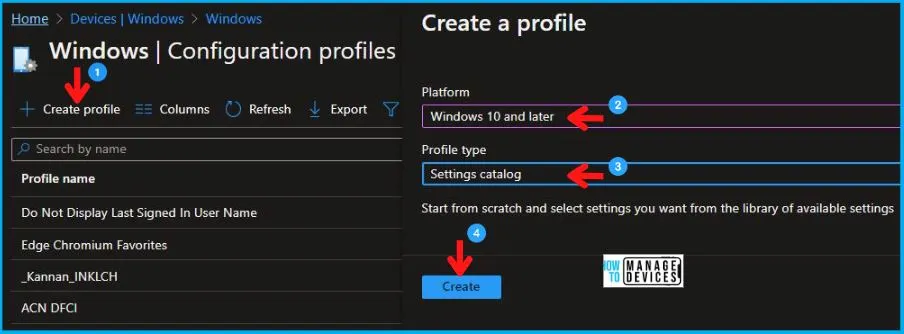
On the Basics tab pane, provide a name for the policy as “Join Microsoft MAPS Policy.” Optionally, you can enter a description for the policy and then proceed by selecting “Next.
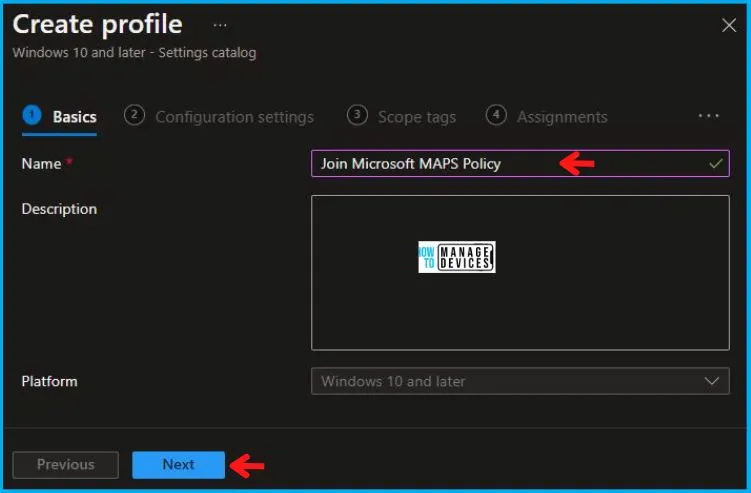
Now in Configuration settings, click Add Settings to browse or search the catalog for the settings you want to configure.
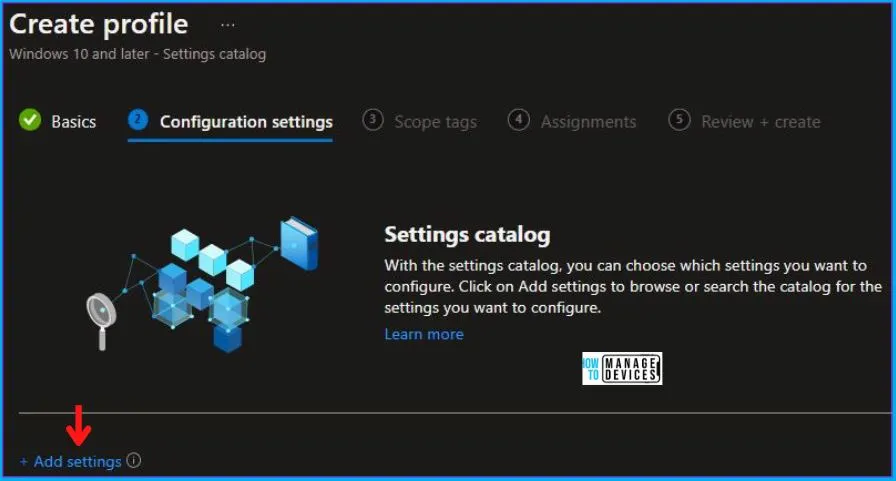
In the Settings Picker windows, search by the keyword Microsoft MAPS, among two, you will see one category by the name of Administrative Templates\Windows Components\ Microsoft Defender Antivirus\MAPS, and select this.
When you select the option stated above, you must choose to Join Microsoft MAPS. After selecting your setting, click the cross mark in the right-hand corner.
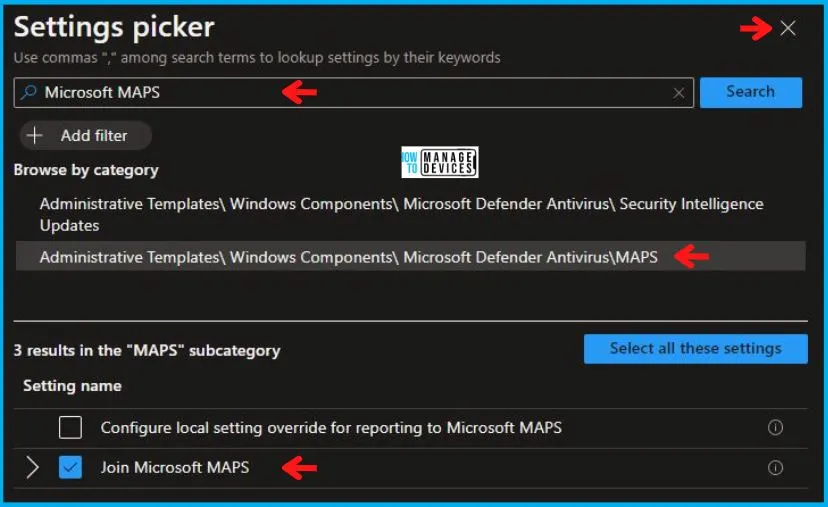
Now, in the Administrative Templates category, set Join Microsoft MAPS to Disabled, as shown below in the image.
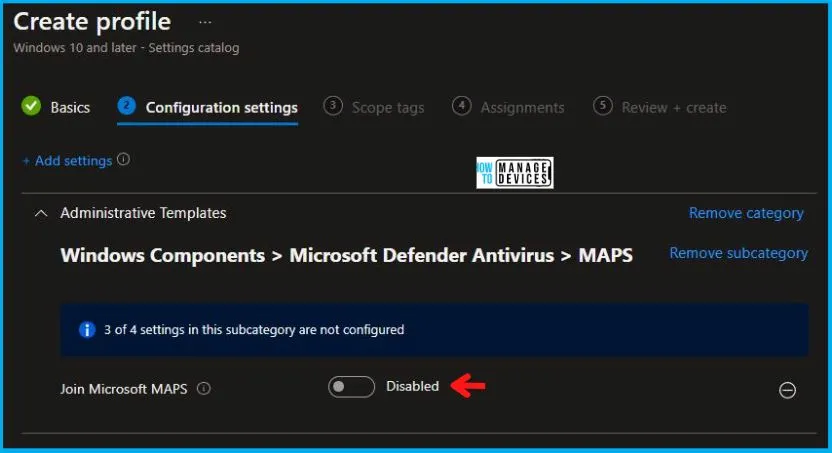
Using Scope tags, you can assign a tag to filter the profile to specific IT groups. One can add scope tags (if required) and click Next to continue. Now in Assignments, in Included Groups, you need to click on Add Groups, choose Select Groups to include one or more groups, and click Next to continue.
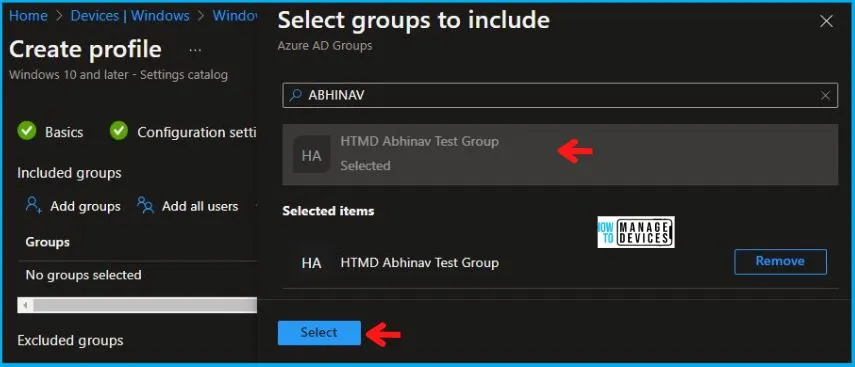
In the Review + Create tab, you need to review your settings. After clicking on Create, your changes are saved, and the profile is assigned.
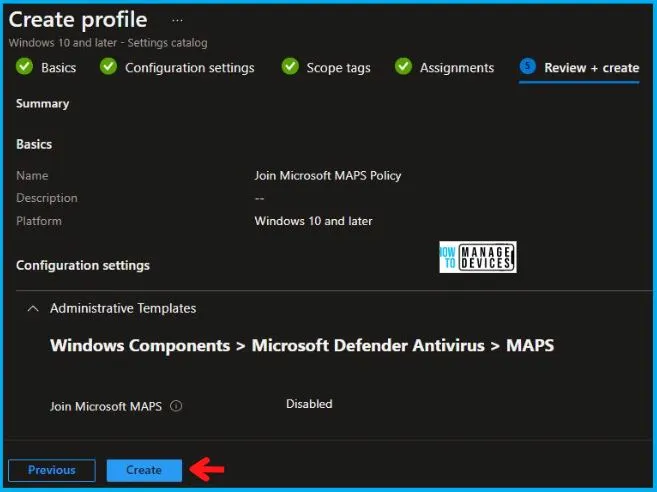
Upon successfully creating the “Join Microsoft MAPS Policy,” a notification will appear in the top right-hand corner, confirming the action. You can also verify the policy’s existence by navigating to the Configuration Profiles list, where it will be prominently displayed.
Your groups will receive your profile settings when the devices check in with the Intune service. The Policy applies to the device.
Intune Report for Join Microsoft MAPS Policy
From Intune Portal, you can view the Intune settings catalog profile report, which provides an overview of device configuration policies and deployment status.
To track the assignment of the policy, you need to select the relevant policy from the Configuration Profiles list. By reviewing the device and user check-in status, you can determine if the policy has been successfully applied. If you require more detailed information, you can click on “View Report” to access additional insights.
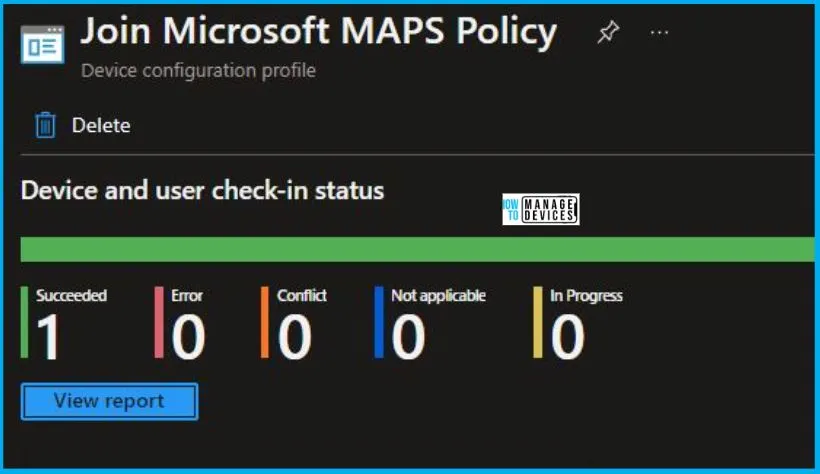
Intune MDM Event Log
To verify the successful implementation of String or integer policies on Windows 10 or 11 devices through Intune, you can leverage event IDs 813 and 814. These event IDs provide valuable insights into the application status of the policy as well as the specific value assigned to the policy on those devices. In the case of this particular policy, the value is String and is linked to the event ID 814.
By analyzing these event IDs, you can gain a clear understanding of the policy’s application status and the corresponding value associated with it on the devices in question.
To confirm this, you can check the Event log path – Applications and Services Logs – Microsoft – Windows – Devicemanagement-Enterprise-Diagnostics-Provider – Admin.
MDM PolicyManager: MDM PolicyManager: Set policy string, Policy: (SpynetReporting), Area: (ADMX_MicrosoftDefenderAntivirus), EnrollmentID requesting merge: (1A661A16-302C-46D4-81F0-AA73244850D8), Current User: (Device), String: (<disabled />), Enrollment Type: (0x6), Scope: (0x0).
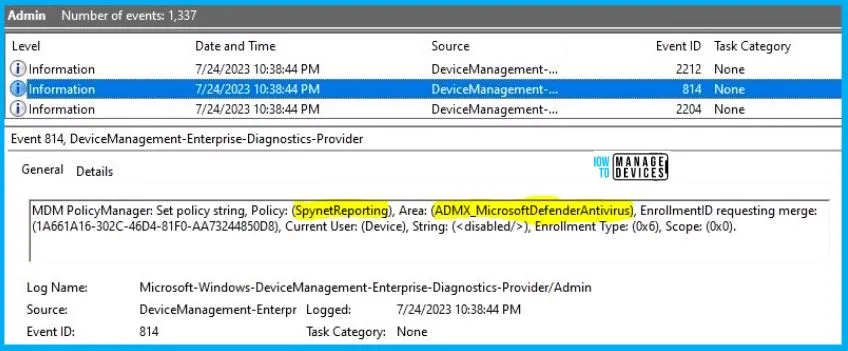
By reviewing the above log entry in the Event Viewer, you will come across essential information, including the Area and Enrollment ID. These details play a significant role in identifying the corresponding registry path. To locate the specific information, please consult the table provided below:
| Area | Policy | String | Scoped | Event ID |
|---|---|---|---|---|
| ADMX_MicrosoftDefenderAntivirus | SpynetReporting | Disabled | Device | 814 |
The details presented in the table above for the Join Microsoft MAPS Policy Using Intune can be employed to access the registry settings that hold the group policy configurations on a specific computer. To accomplish this, you can execute “REGEDIT.exe” on the target computer and navigate to the precise registry path where these settings are stored.
- Computer\HKEY_LOCAL_MACHINE\SOFTWARE\Microsoft\PolicyManager\providers\1A661A16-302C-46D4-81F0-AA73244850D8\default\Device\ADMX_MicrosoftDefenderAntivirus
When you navigate to the above path in the Registry Editor, you will find the registry key with the name SpynetReporting. Refer to the table and image below.
| Registry Name | Value |
|---|---|
| SpynetReporting | Disabled |

Author
Abhinav Rana is working as an SCCM Admin. He loves to help the community by sharing his knowledge. He is a B.Tech graduate in Information Technology.
